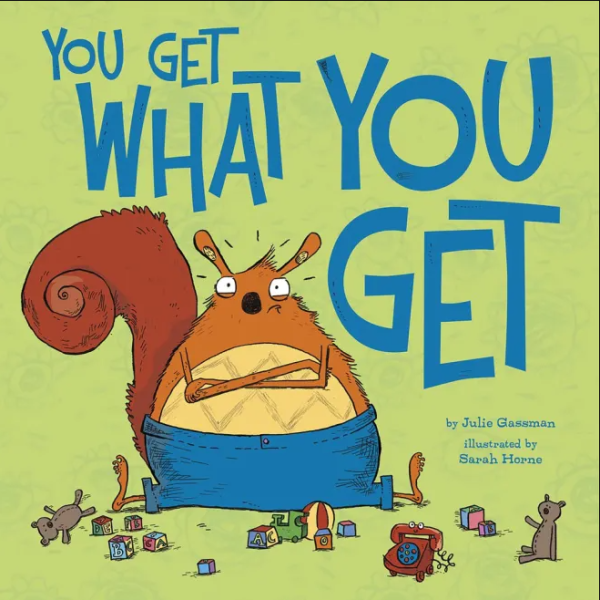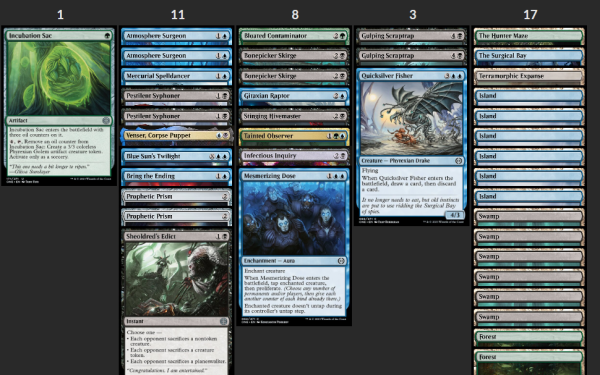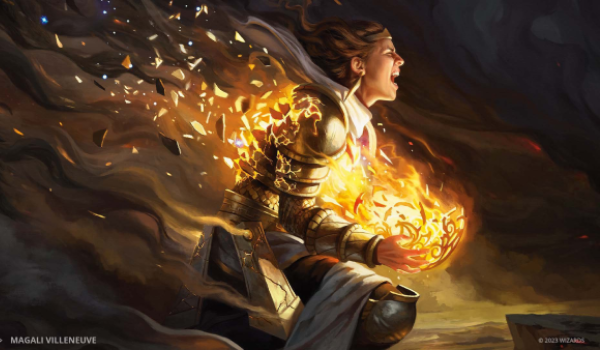Are you a Quiet Speculation member?
If not, now is a perfect time to join up! Our powerful tools, breaking-news analysis, and exclusive Discord channel will make sure you stay up to date and ahead of the curve.
This weekend is the Arena Qualifier Weekend, and a huge opportunity for Limited players. With a ticket to the Arena Championship and the Pro Tour (!) at stake, we want to be ready. Since last week's article, I've switched my focus from Draft to Sealed to better prepare myself for this event. The format retains some of the truths we discussed last week, while being influenced by a few new wrinkles.
The Nature of Sealed
Sealed, by nature, is a less streamlined environment than Draft. Players do not get to cultivate their card pool by finding open lanes. Rather, we open six boosters, and we get whatever's there.

This impacts the format in a number of ways. The three biggest differences, and this is always true of Sealed vs. Draft in any expansion set, are as follows:
- Decks are less streamlined, and typically less aggressive.
- Bombs have an oversized impact on gameplay.
- The full side-board juke is in play.
ONE has its fair share of game-wrecking bombs. Whether it be the Sun's Twilight cycle, the Planeswalkers at rare, or the insane mythics, these cards can be devastating. As a result, we should value removal spells more highly. We need a plan to beat those bombs, and if we're not going to have enough aggression to keep our opponents from casting a Kaya, Intangible Slayer while still at 12 life, we need to have removal and counters to answer them (or in Kaya's case, to clear the way).
The aggressive nature of Draft format keeps many of the bombs in check. In Sealed, we need to rely more heavily on removal.
The Nature of ONE
Whether our sealed memories come from local prereleases or the GPs of yore, they're often marred by a similar experience. After a number of difficult decisions, we've finalized a configuration that balances power and consistency as best our pool offers. We have a plan as we sit down in front of an overzealous neophyte. They're excited, but unfamiliar with the nuances of the game, and we anticipate moving on to the next round with a win. However, as the game matures, we are outgunned. Our ingenuity and careful navigation of every micro-decision up to this point crumbles as we do battle with the fifth and sixth rare to come off the top of our opponent's deck. We fall in defeat.
While these memories stick out, they don't define effective deck building. This is still ONE. That means the fast starts from the Toxic decks, or a quick finish from Hazardous Blast, can still punish us. Holding an off-color removal spell instead of an on-color combat trick can cost us the game.
ONE is still an aggressive set, and we need to make sure we keep that in mind as we build our decks. While some formats give us more leeway when it comes to building messy four-color, rare-filled piles, ONE is not kind to such liberal designs. The best decks are still going to be two-colors, possibly with a small splash. As of writing this article, 17Lands has two-color decks winning 57.2% of the time, while two-colors with a splash and three-color decks win 54.4% and 51.4% of the time, respectively.
I'm not saying don't splash. I'm saying be responsible. Our two-drops are essential, and our cards will be better when we're ahead, rather than desperately trying to play catch-up.
Red Stays Strong; White Steps Back
In last week's article, we talked about how red and white had the best commons, and therefore provided the best starting points for draft. The biggest difference between these colors, however, is that red is less reliant on synergies. Many of the best red commons will flourish in any shell, even if the deck fails to optimize its keywords.
Reddy for anything
These cards are reliable in many circumstances. They play with the format's rules of engagement in mind, and while some archetypes or color combinations will get more out of them than others, seeing a stack of these cards in our pool should tempt us to play red. We still want to pressure our opponent, even though the format is less synergistic. Hazardous Blast is still going to win games out of nowhere, and these cards are still good cards.
Conversely, white requires a more inventive approach. It pairs well under a few different circumstances, but the focused Toxic deck is harder to build. Fortunately, many of these white cards still pay well in aggressive strategies, and if our pool supports that build, white can be a meaningful role player. Cards like Compleat Devotion, Zealot's Conviction, and even Flensing Raptor, while still good, are not the draws into the color that they can be in draft.
We can also pair white with proliferate to help threaten a win over the longer game.
Proliferate Gets Its Moment
Toxic, corrupted, and oil have dominated ONE draft so far. These mechanics play to the board, and when properly supported, can snowball into insurmountable advantages. This has pushed the slower proliferate effects to the corner of the format. However, when players don't have the luxury of prioritizing early, synergistic plays, it lessens this impact. Proliferate is a glue mechanic in a format that is a little too streamlined to want one. Sealed gives it the space it needs to thrive.

UBg Proliferation Control 7-2
This deck played very smoothly. I was able to incorporate my bombs in a three-color deck. It was a slower, more controlling deck, but the low average casting cost prevented me from falling too far behind. My allotment of 2/1s were great at trading off, while Venser, Corpse Puppet impressed mightily. If you told me you were sleeving up this deck in draft, I'd be very worried. In Sealed, we have more time to let our synergies develop.
Gulping Scraptrap improves by more than three percent GIH WR in Sealed as compared to Draft. This card has seemed like a reasonable finisher in Toxic, and a decent value spell in more controlling shells.
Getting the Most Out of Other Colors
The biggest issue blue and black have is the relative weakness of their early plays. Both colors, especially blue, want to play an attrition game and posture defensively. This is a liability in the format. However, the following cards might impress you if you end up in these colors.
Dimiracle workers
First, we still want to make sure we have a good reason to be in these colors, so don't abandon a perfectly good GW aggressive deck because for a couple of Serum Snares.
Assuming we have a good rare, some meaningful uncommons, and Anoint with Affliction, we may find ourselves in black. When our two drops matchup ineffectively with our opponents, we need to be able to find edges in early combat. Whisper of the Dross can help provide this. It isn't exactly Hexgold Slash, but it does a similar job. Killing a Dune Mover or Mandible Justiciar on the draw feels insane.
Offer Immortality is the trump card for every combat trick in the format. Is our opponent setting up a Blazing Crescendo? How about a Ruthless Predation? If so, this Offer can't be refused. This card plays better when behind, and while we shouldn't actively be trying to fall behind, this color combination often does.
The name of the game is keeping parity through the early stages so we can curve into card advantage and a powerful top-end. Testament Bearer and Dross Skullbomb seem better in Sealed than Draft, and Quicksilver Fisher goes from a card I'm trying not to play to one that I'm relatively happy to include.
Bombs vs. Removal
"Play your bombs, play your removal:" once the most common piece of advice we could get when it came to Sealed. While our attention should lean closer toward building a functioning deck with two-drops, the old adage still has some truths. Our opponents will have more bombs than a typical Draft deck. The biggest draws into each color will be the rares we open, not the open lane. If we anticipate seeing threats that will warp the game, we need removal spells. In sealed, I'm typically willing to have an over-costed answer in my deck.
In an ideal world, we'll open Volt Charge, Planar Disruption, and Infectious Bite. However, we might not be so lucky. Cards like Vanish into Eternity might find their way into our maindeck because we're more incentivized to have removal, especially the kind that can answer anything. While we should hope to have more efficient answers, a card like Vanish or Bring the Ending might be a necessary inclusion to prevent us from losing to a Nissa, Ascended Animist or Capricious Hellraiser. We will see cards at that rarified power level more often in Sealed. And unlike in Draft, we may not have the aggressive start to rush by them.
The 40-Card Sideboard Juke
One of the last GPs I went to was Ravnica Allegiance Sealed. My pool did not seem particularly strong, though had I recognized the power of Dovin's Acuity, I may have reconsidered. Regardless, I played an Azorious Control deck (without the Acuity) that splashed green for three copies of Rampaging Rendhorn, as my deck offered only blue-green duals and very few win conditions. I lost the first round and considered side events. My fortune would soon change.
Between each subsequent round I tinkered with the cards in my pool, looking for other options. I found one: a removal-heavy Rakdos Tempo deck that was short a couple playables. Still, the deck had a plan.
After game one of each round, I swapped decks, going from a slow controlling deck to a more aggressive strategy. Game two, my opponent was always caught off guard as I embarrassed their sideboard plans, and game three they were left guessing. Being able to identify which of my two decks was advantaged in a given round gave me an enormous strategic advantage. I was able to rally, finishing X-2 and made the second day of the tournament (where I earned my first Pro Points, days before they disbanded the system).
Those of us new to Sealed, or less familiar with sideboarding as the best-of-one landscape has become dominant on Arena, may not know of this option. If we have two reasonable decks to use, we might want to consider both. While we'll have to start with one, if we recognize a brutal match-up, we need to know when we have access to a full pivot. While sideboard in draft is limited to a shifting a few cards or less, in Sealed, we might consider all forty.
Sealing the Deal
As we get ready for this weekend, hoping to crash the Pro Tour, make sure to get all of your edges. We want to be proactive in our deckbuilding and gameplay, and we want to make sure we have a strong curve of creatures that hopefully gets the most out of our bombs and removal. While Sealed can sometimes feel frustrating, it asks the most of us as deck-builders. Leave no stone unturned, know your sideboard plans, and play tight. This could be your weekend.





